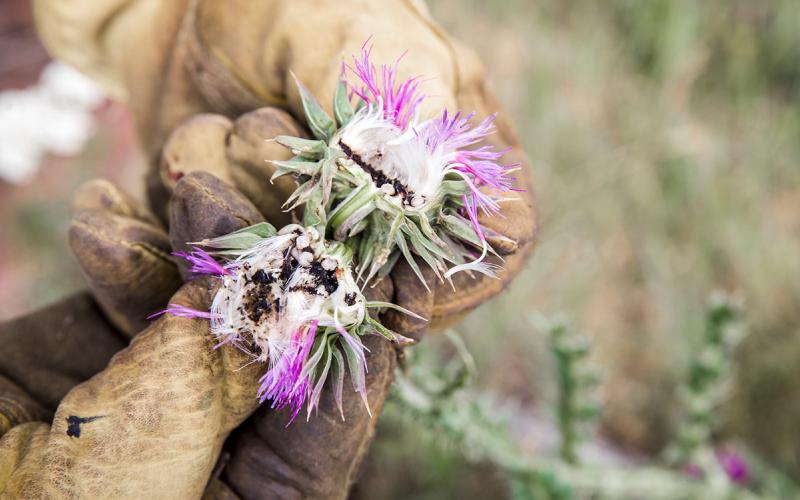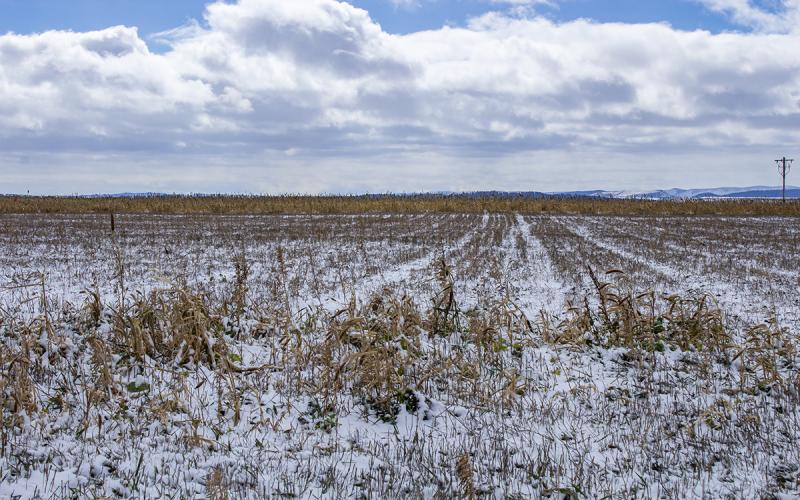Written collaboratively by Eric Jones, Philip Rozeboom, Jill Alms, and David Vos.
East River air temperatures have ranged from 20 to 70 degrees Fahrenheit, while the soil temperatures have ranged from 45 to 65 degrees Fahrenheit in the past two weeks (SDSU Mesonet). Coupled with late snow and rain events, conditions have been favorable for noxious weed germination. Early germinating species include biennial thistle, Canada thistle, and absinth wormwood. These species inhabit disturbed areas, including cropland, pastures, fence rows, and right-of-ways. If not managed, these species can decrease crop and pasture production, while infesting new land areas. Now is the time to scout and determine where areas will need management later in the growing season.
Noxious Weeds to Scout
Biennial Thistle
Bull thistle and musk thistle are biennial species that, in the first year, grow in a basal rosette (Figure 1). Plant stems in the second year “bolt” to produce flowers and seeds. Bull thistle will have deeply-lobed leaves covered in dense hairs and spines. Musk thistle will have deeply-lobed, hairless leaves with spines present on the leaf tips; leaf margins will be white in color (Figure 2).Once the plant exhibits vertical growth, flowers will be produced followed by seeds. Seeds can be spread by wind to inhabit land areas that can be far away (Figure 3).
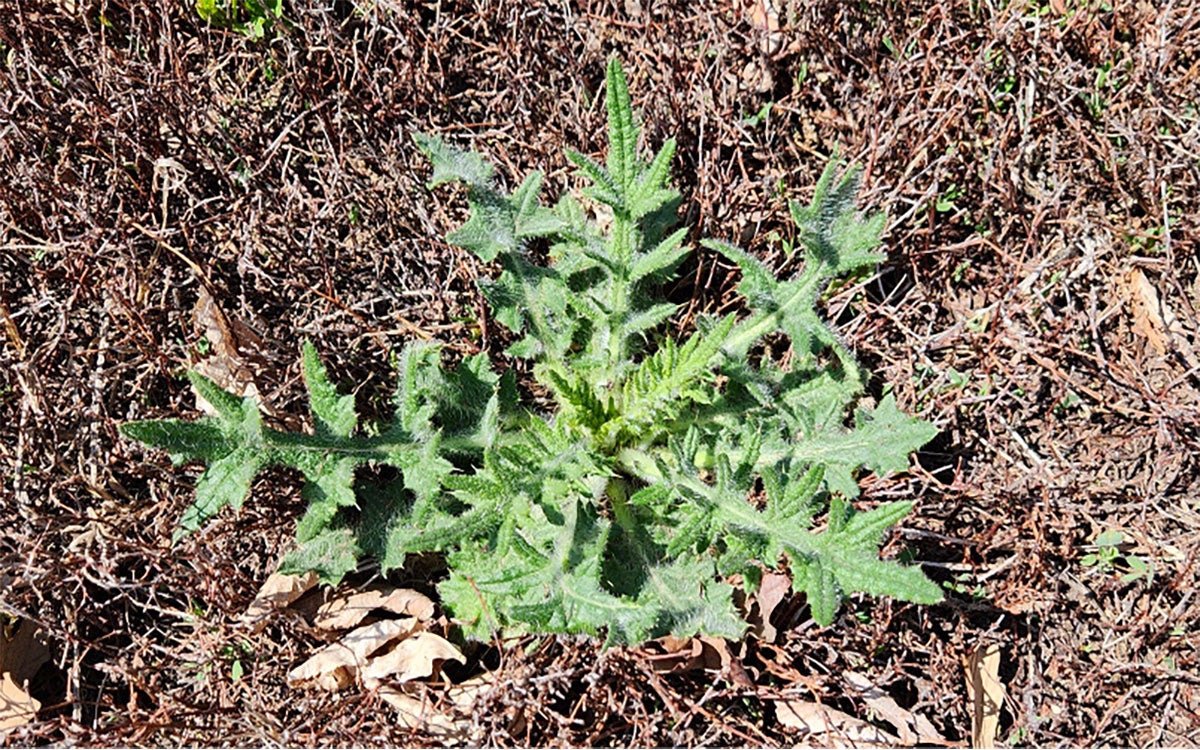
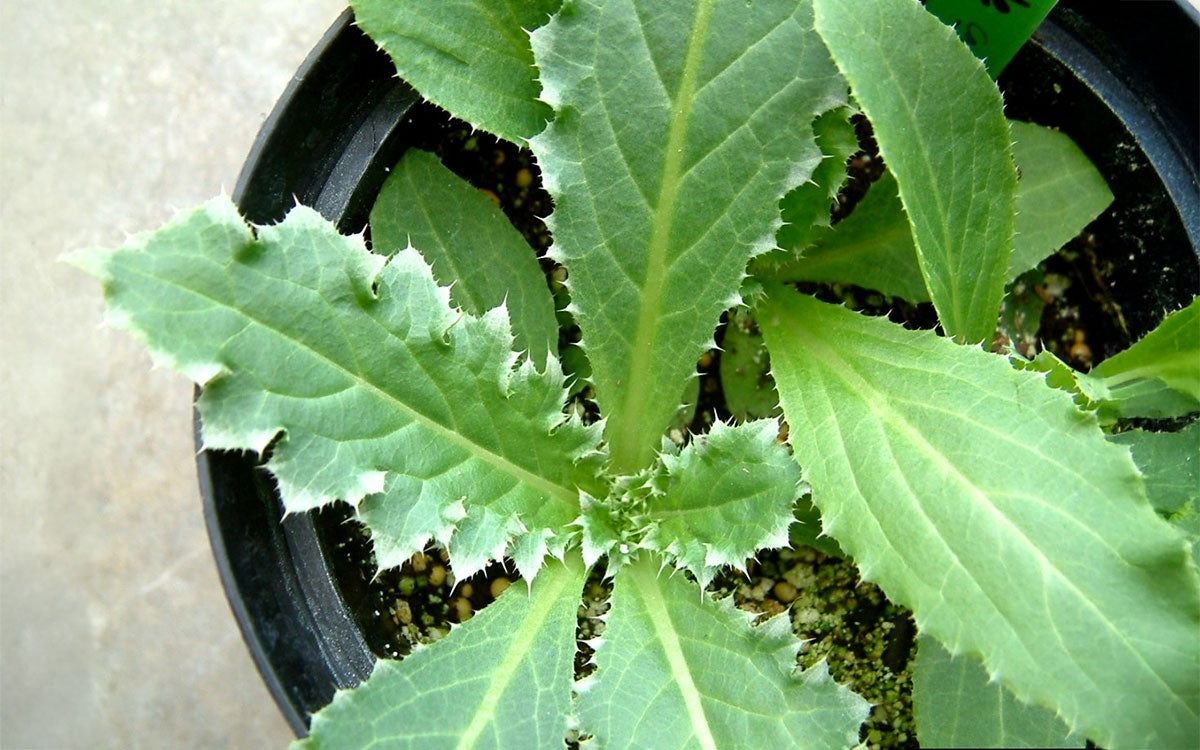
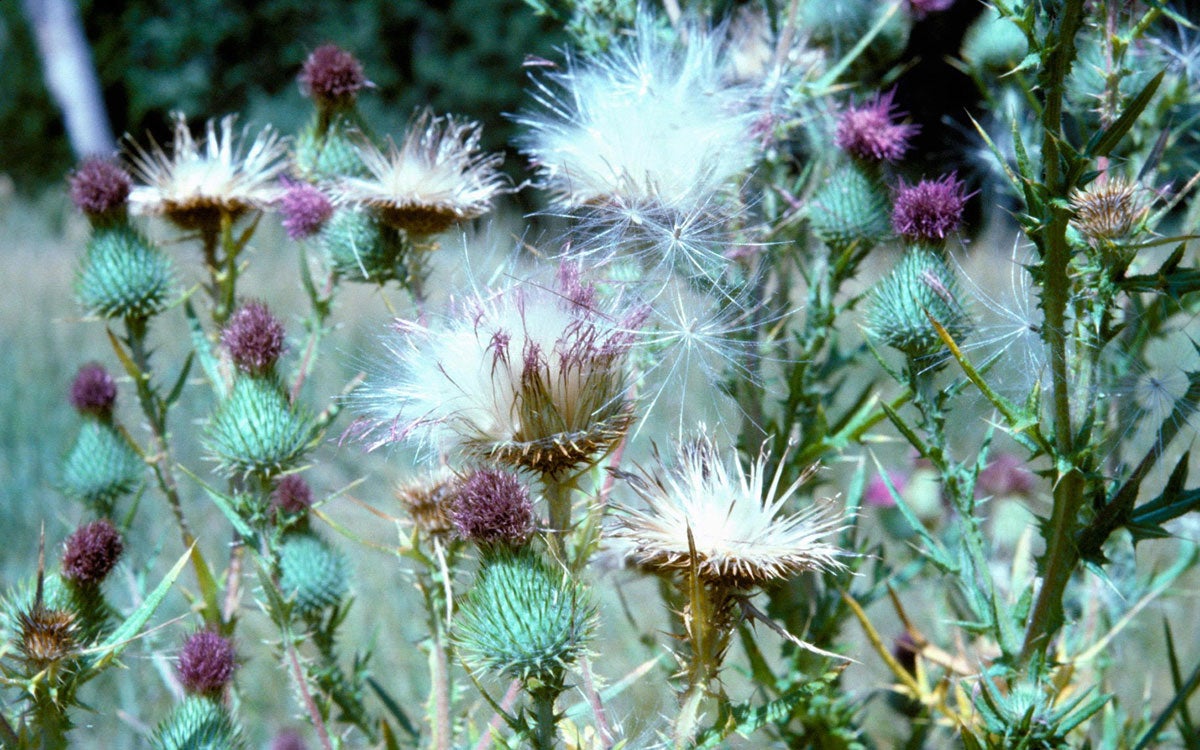
Canada Thistle
Canada thistle is a perennial species that can spread by an extensive root system (rhizomes) and seeds. Plants first grow as basal rosettes and then the stems “bolt” (Figure 4). Leaves are irregularly lobed with toothed margins covered in short, dense hairs. Once the plant exhibits vertical growth, flowers will be produced, followed by seeds. Similar to the biennial thistle, seeds can be spread by wind to inhabit land areas that can be far away.
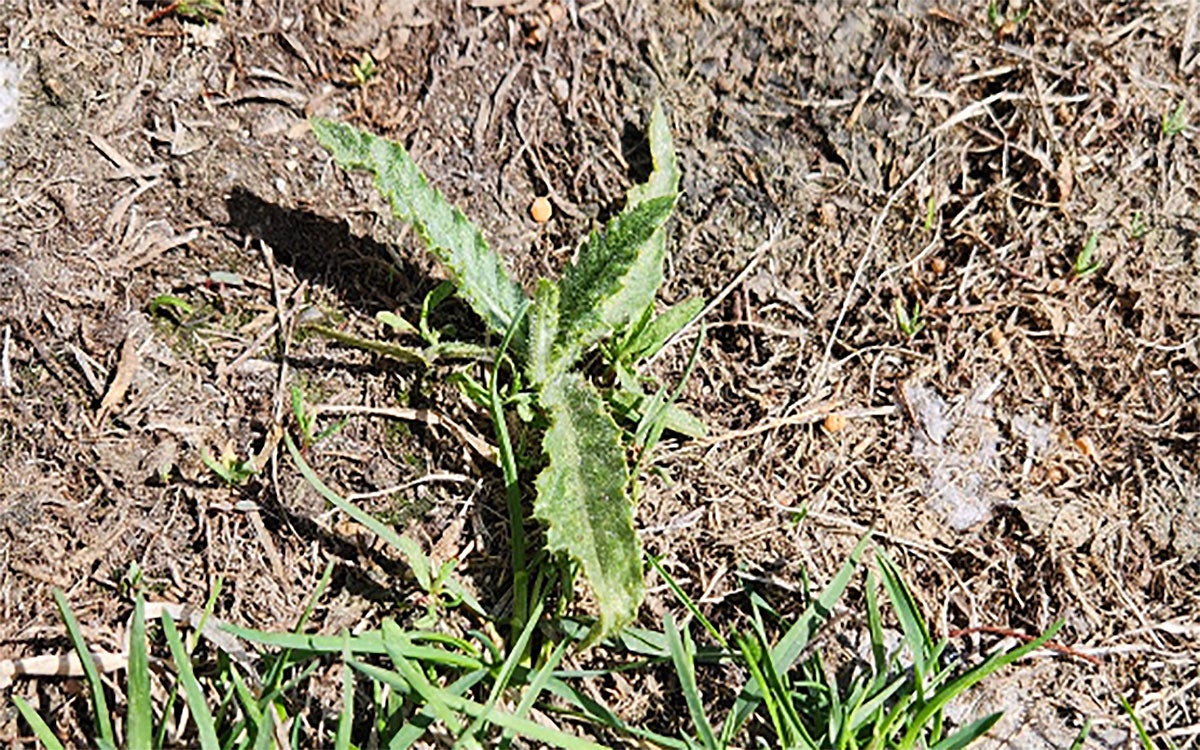
Absinth Wormwood
Absinth wormwood is a perennial noxious weed species that reproduces by seed. Early growth of absinth wormwood is gray-green in color (Figure 5). Absinth wormwood leaves are finely divided, and they give off an aromatic sage smell when crushed. As the plants mature, the leaves begin to exhibit a white hue. Each plant can produce vast amounts of seeds that can be spread by wind as well.
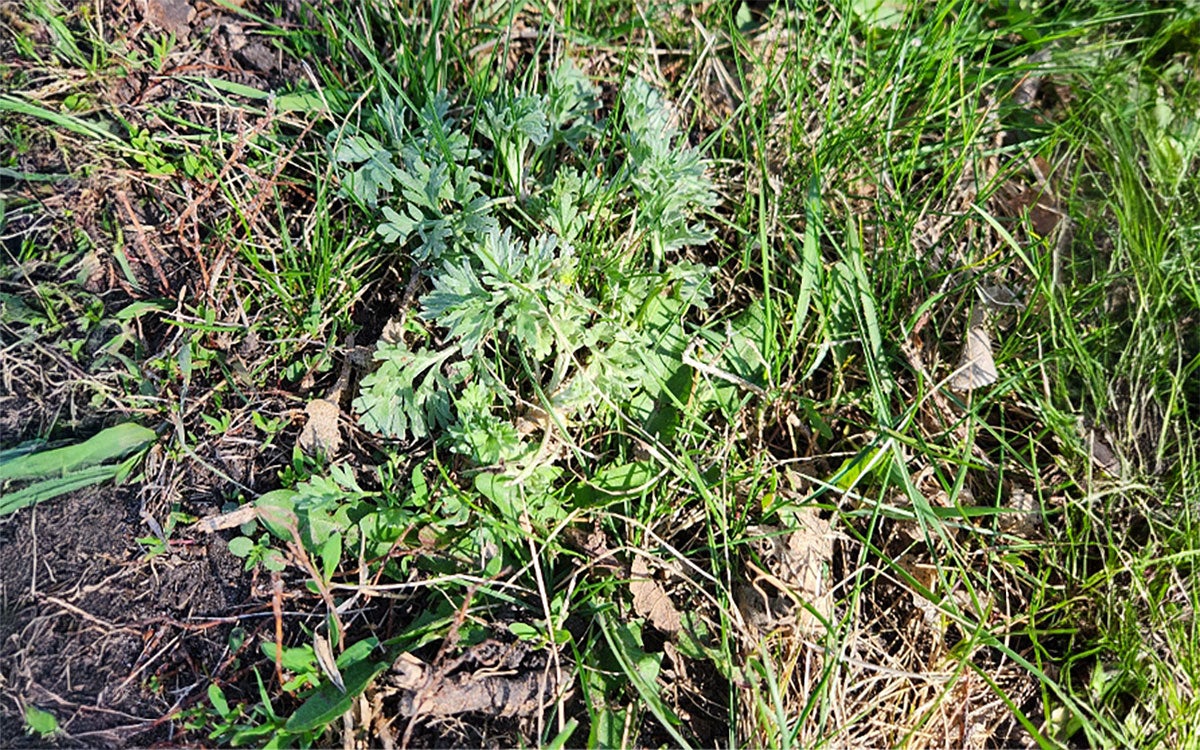
Management
An integrated approach, using tactics from the cultural, biological, mechanical, and chemical sectors, will likely result in more effective management compared with using any one single tactic alone.
Cultural and Biological
If plants are too mature to spray, removing the stems to minimize seed production will decrease the infestation potential to adjacent areas. When plants have been cut, desirable vegetation will likely be more competitive against these weeds.
No biological control agents are available to manage absinth wormwood. However, there are stem gall flies and weevils (Figure 6) that can reduce seed production of thistle. These insects are usually naturally occurring.
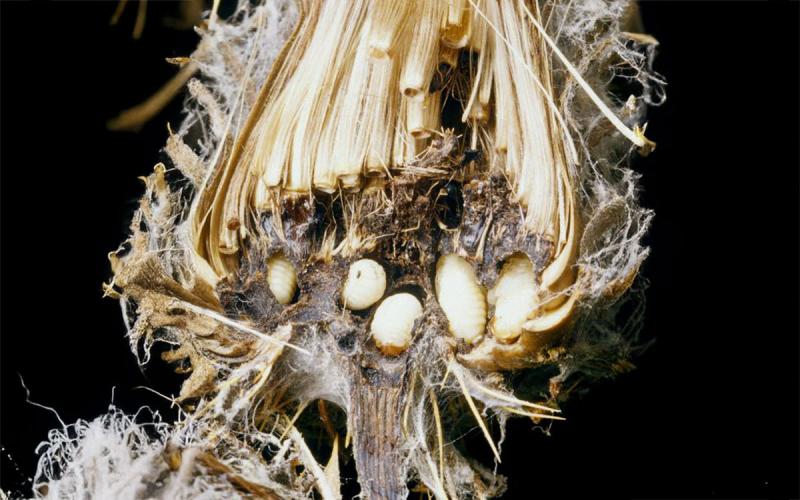
Mechanical
Hand weeding and mowing can be effective to minimize seed production but if used alone, these tactics may not be effective. Mechanical tactics are effective if used on more mature plants and then followed by a fall herbicide treatment.
Herbicides
Plants should be treated at an early stage. Absinth wormwood should be treated before the leaves turn “white”. Biennial and Canada thistle should be treated in the basal rosette stage before the stems begin to emerge. Many auxin herbicides (such as 2,4-D, aminopyralid [Milestone], and picloram [Tordon]) are effective on these species. A follow-up treatment in the fall may be necessary. Refer to SDSU Extension’s latest Weed Control: Noxious Weeds publication for a complete list of herbicides.
